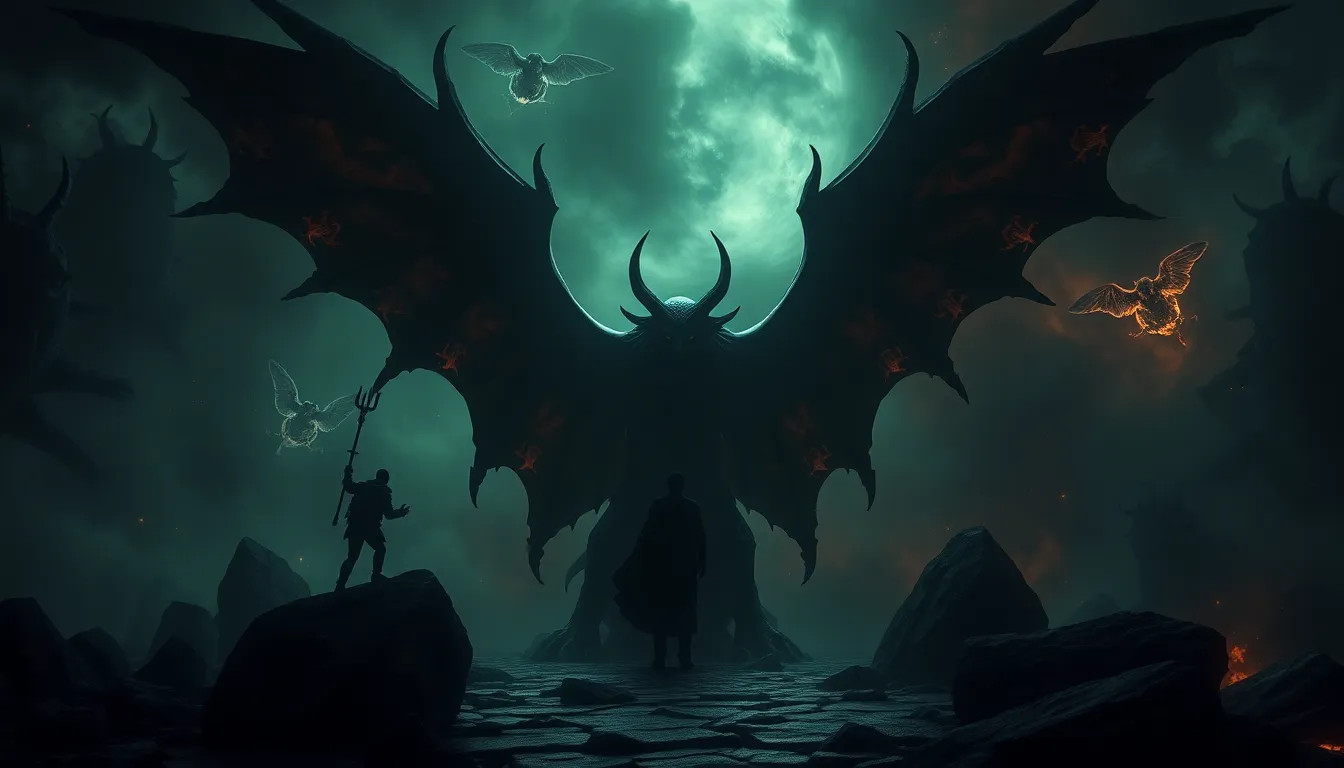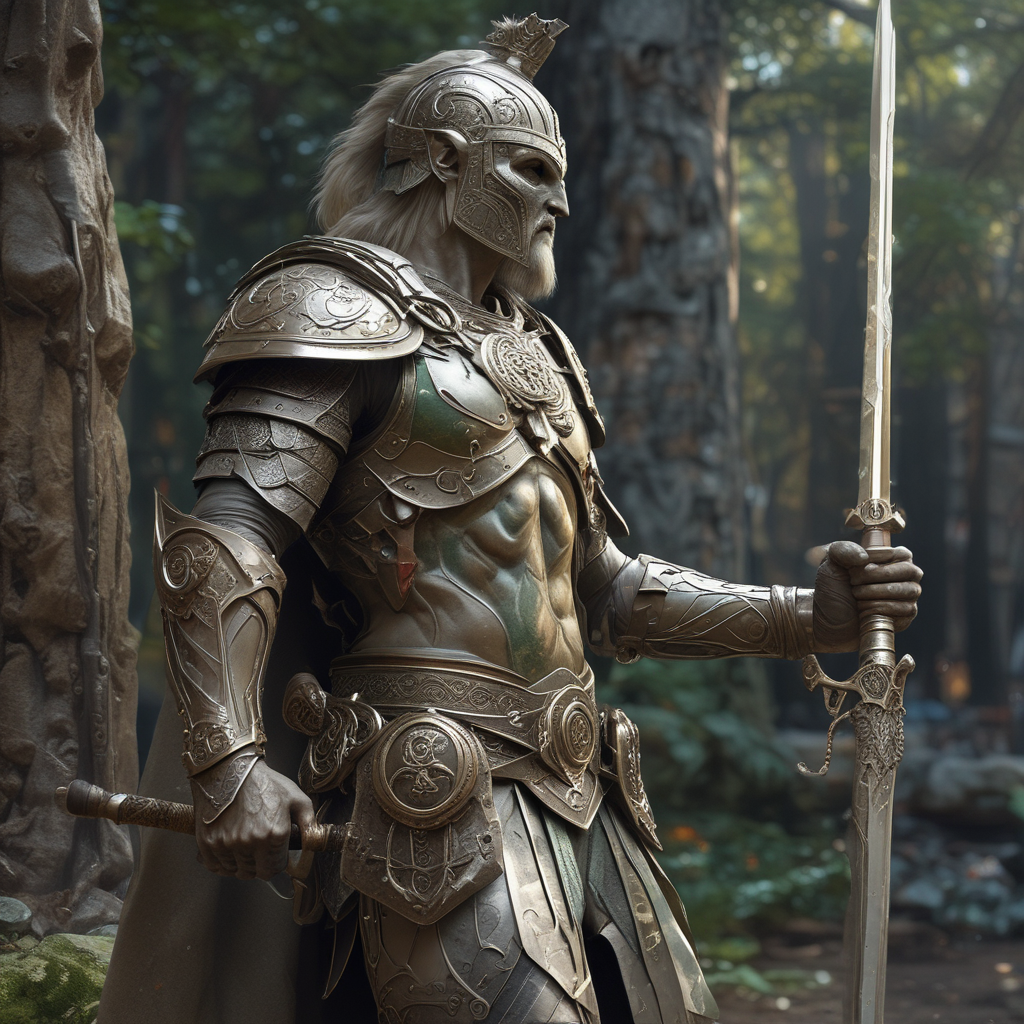Underworld Myths: The Dark Tales That Fascinate Us
Introduction to Underworld Myths
Underworld myths, often characterized by their dark and mysterious themes, form an essential part of the mythological tapestry across various cultures. These narratives typically revolve around the realm of the dead, featuring gods and spirits who govern the afterlife. The significance of these myths goes beyond mere storytelling; they serve as a reflection of societal beliefs, fears, and the human condition itself.
Our fascination with dark tales can be attributed to their exploration of existential questions and the unknown. They delve into themes of mortality, morality, and the afterlife, providing a framework for individuals to understand their own experiences with loss and death.
The Origins of Underworld Myths
The origins of underworld myths can be traced back to ancient civilizations, where the concept of an afterlife was integral to religious and spiritual beliefs. Early humans sought to explain the mysteries of death and what lay beyond, leading to the development of various narratives surrounding the underworld.
In many cultures, religion played a pivotal role in shaping these narratives. For example, the Egyptians believed in a complex afterlife governed by divine beings, while the Greeks emphasized the moral implications of one’s life choices and their impact on the afterlife. These early beliefs laid the groundwork for the rich tapestry of underworld myths that would evolve over time.
Iconic Underworld Figures Across Cultures
Throughout history, various cultures have depicted prominent deities and figures associated with the underworld. Some of the most notable include:
- Hades (Greek Mythology): The god of the underworld, Hades ruled over the realm of the dead and was often depicted as stern yet just.
- Osiris (Egyptian Mythology): The god of the afterlife and resurrection, Osiris represented the cycle of death and rebirth, symbolizing hope and renewal.
- Yama (Hindu Mythology): As the god of death, Yama judged the souls of the deceased, determining their fate based on their earthly actions.
These figures are often characterized by specific symbolism. For instance, Hades is commonly associated with wealth and the hidden treasures of the earth, while Osiris embodies the concept of resurrection and eternal life.
The Journey to the Underworld: Beliefs and Rituals
Cultural practices surrounding death and the afterlife vary widely, reflecting the beliefs and values of different societies. Many cultures have rituals designed to guide the deceased to the afterlife, ensuring they are properly honored and prepared for their journey.
Significant myths detail the journey to the underworld, serving as a narrative framework for these beliefs. For example:
- Orpheus and Eurydice (Greek Mythology): This myth tells the tale of Orpheus’s descent into the underworld to retrieve his beloved Eurydice, highlighting themes of love and loss.
- The Egyptian Book of the Dead: This ancient text served as a guide for the deceased, providing spells and instructions for navigating the afterlife.
Underworld Myths in Literature and Art
Underworld myths have significantly influenced literature, visual arts, and modern media, inspiring countless works that explore these themes. Notable examples include:
- Dante’s “Inferno”: This epic poem vividly illustrates the journey through the nine circles of hell, reflecting on sin and redemption.
- Virgil’s “Aeneid”: The hero Aeneas’s descent into the underworld provides insights into Roman beliefs about the afterlife and the importance of duty.
These literary works not only depict the underworld but also engage with the moral and philosophical questions surrounding life and death, making them timeless pieces that resonate with readers across generations.
Psychological Interpretations of Underworld Myths
Underworld myths also offer rich psychological interpretations, revealing deeper meanings behind these dark tales. They reflect human fears regarding mortality, the unknown, and the moral consequences of one’s actions. The narratives often serve as cautionary tales, illustrating the repercussions of poor choices and the importance of virtue.
Moreover, these myths can be seen as a manifestation of the collective unconscious, echoing universal themes that resonate with the human experience. They invite introspection, prompting individuals to confront their own beliefs about life, death, and what lies beyond.
Modern Adaptations and Pop Culture References
The allure of underworld myths is not confined to ancient texts; they have been reimagined in contemporary storytelling through various mediums. Modern films, books, and video games draw inspiration from these ancient tales, often incorporating elements of the underworld into their narratives.
Some popular culture examples include:
- “The Nightmare Before Christmas”: This animated film creatively blends various mythological elements, including those of the underworld.
- “Hades”: A popular video game that allows players to explore the underworld while engaging with various mythological figures.
These adaptations demonstrate the enduring fascination with underworld myths, showcasing their ability to evolve while retaining their core themes.
Comparative Analysis of Underworld Myths
A comparative analysis of underworld myths reveals both similarities and differences among various cultures. Common themes include:
- Judgment: Many cultures emphasize the importance of moral judgment in the afterlife, often with deities tasked with assessing souls.
- Redemption: The possibility of redemption or rebirth is a recurring theme, suggesting hope beyond death.
- The Afterlife: Most cultures envision an afterlife, whether a paradise, a series of trials, or a realm of punishment.
These universal themes highlight the shared human experience of grappling with mortality and the unknown, suggesting a collective quest for understanding the afterlife.
The Enduring Legacy of Underworld Myths
The legacy of underworld myths remains relevant in today’s society, influencing moral teachings, folklore, and contemporary beliefs. They continue to serve as a framework for understanding death, prompting individuals to reflect on their lives and choices.
Moreover, these myths provide a lens through which we can explore existential questions, making them an invaluable part of the human experience. As societies evolve, the core themes of underworld myths adapt, yet their essence remains unchanged.
Conclusion: The Allure of the Underworld
The allure of underworld myths lies in their exploration of the darkest aspects of the human experience. They invite us to confront our fears, reflect on our morals, and ponder the mysteries of existence. Through these stories, we gain insight into the human psyche and the universal questions that transcend time and culture. Ultimately, underworld myths remind us of our shared journey through life and beyond, offering a profound understanding of the human condition.



